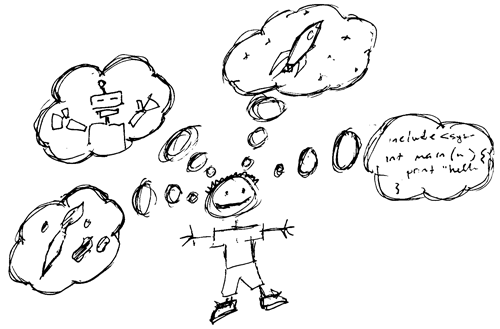What Can Teachers and Students Teach Us About Project Based Learning?
In John Larmer and John Mergendoller's article, Seven Essentials for Project Based Learning, they stated that instructors should be cautious in regards to PBLs. One must ensure that the project does not become "busywork" but focus on creativity and assisting the students in in understanding the subject matter. They provide a guideline that I have listed below:
1. Need to Know: The teacher has to provide an "entry event", such as a video, guest speaker, discussion, etc., to captivate the students's attention.2. A Driving Question: This should be the focal point of the topic that is being addressed.
3. Student Voice and Choices: Students should be able to chose how they will proceed with researching concerning the project.
4. 21st Century Skills: Collaborating in this style of work is mandatory. Students will focus on communicating and mastering technology, as well as critical thinking.
5. Inquiry and Innovation: Teachers should have the PBLs relatable to the "real world".
6. Feedback and Revision: Students will develop the skills of constructive criticism with the use of a rubric.
7. A Publicly Presented Product- One idea is that if the students are aware their finished product will be on display, they will be more conscientious.
The video entitled Project Based Learning for Teachers directed one's attention to what PBL is and how it aids in teaching. When working on a project, students research to provide a response of the question asked, as well as be able to document and share their discovery with others.
Project Based Learning in PE targets students abilities in creating objectives for themselves in physical education, as well as collaborating to analyze data revolving around younger students. The children are required to follow the Physical Education standards provided by The National Association for Sport and Physical Education.
1. Student demonstrates competency in motor skills and movement patterns needed to perform a variety of physical activities.2. Student demonstrates understanding of movement concepts, principles, strategies, and tactics as they apply to the learning and performance of physical activities.
3. Student participates regularly in physical activity.
4. Student achieves and maintains a health-enhancing level of physical fitness.
5. Student exhibits responsible personal and social behavior that respects self and others in physical activity settings.
6. Values physical activity for health, enjoyment, challenge, self-expression, and/or social interaction.
In the article and video, Two Students Solve the Problem Watery Ketchup By Designing a New Cap, the audience observes two high school students who redesigned a device that would separate the "watery" substance from the actual tomato base. The students created the item with a software program after sketching out the details on graphing paper. These is a fabulous example of collaboration within the project based learning programs.
PBL: What Motivates Students Today is another video that demonstrates objectives instructors should consider when they develop their PBL. Various students stated that encouragement from teachers, extracurricular activities, and future success assist in keeping them motivated while in school.













